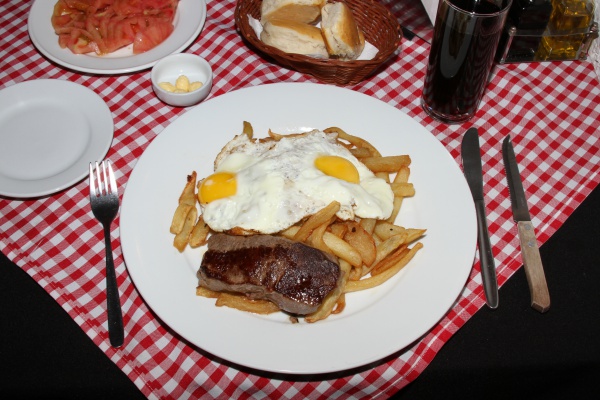Facts About Lomo a lo pobre
Lomo a lo Pobre: A Culinary Tradition from Chile and Peru
Lomo a lo pobre, also known as bistec a lo pobre or bife a lo pobre, is a cherished traditional dish originating from Chile and Peru. This hearty meal typically features tender beef topped with fried eggs and a generous serving of French fries. In Chile, it is often accompanied by fried onions, while in Peru, it may be served with rice and fried plantains. Unlike the classic breakfast combination of steak and eggs, lomo a lo pobre is usually savored for lunch or dinner.
But where does the term "a lo pobre" come from? In Peru, its origins are somewhat enigmatic. One theory suggests that it is an ironic reference to 19th-century Peruvians who, despite economic difficulties, managed to enjoy substantial meals. Another theory posits that it reflects how lower-income residents of Lima combined meat with hearty sides like carbohydrates, eggs, and rice, whereas wealthier individuals paired their meat with vegetables. Today, lomo a lo pobre is a favorite in restaurants catering to all, regardless of social class, and carries no negative connotations.
In contemporary Peru, "a lo pobre" has taken on a broader meaning. It now signifies the addition of a fried egg to various dishes beyond just steak. You can find it on grilled chicken breasts, in rice dishes like arroz chaufa, lomo saltado, salchipapas, and even burgers. This versatile culinary term has become a staple in Peruvian cuisine, adding a delightful twist to many meals.

 Argentina
Argentina